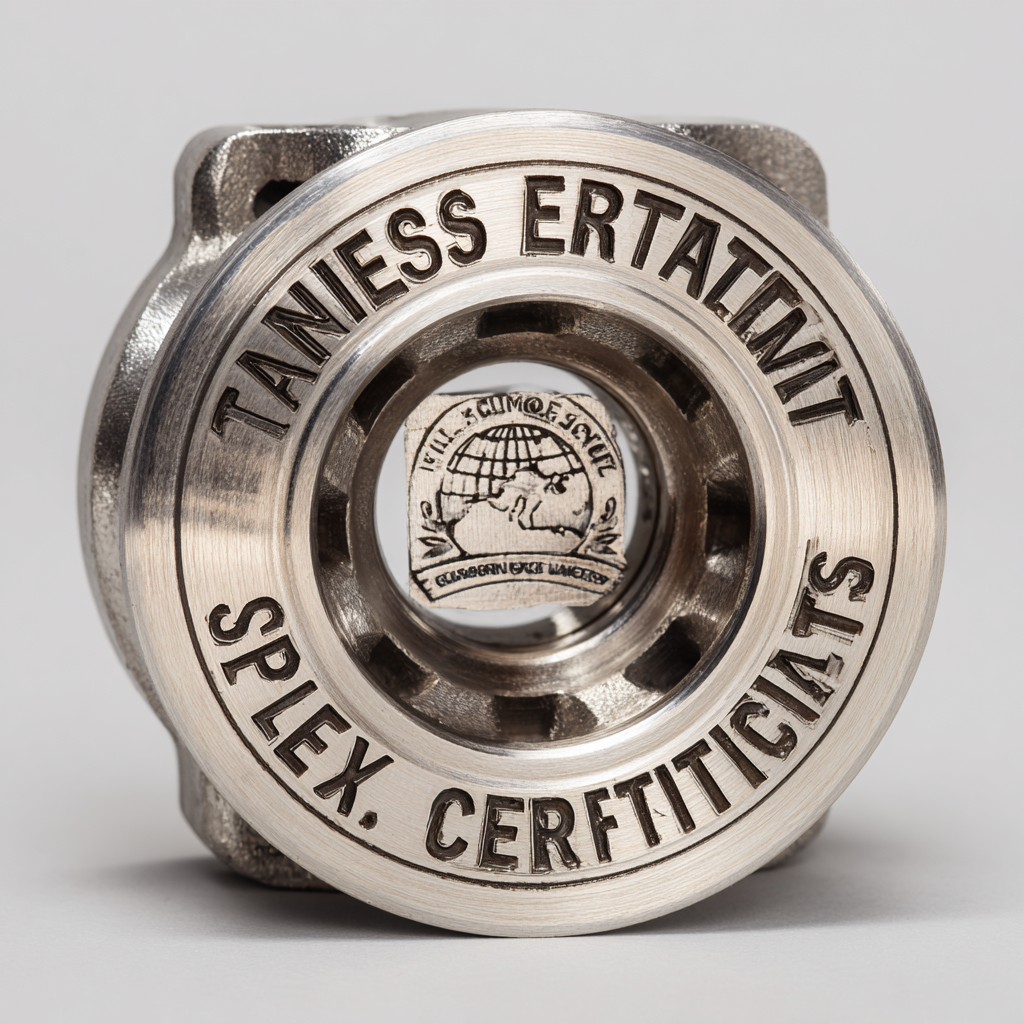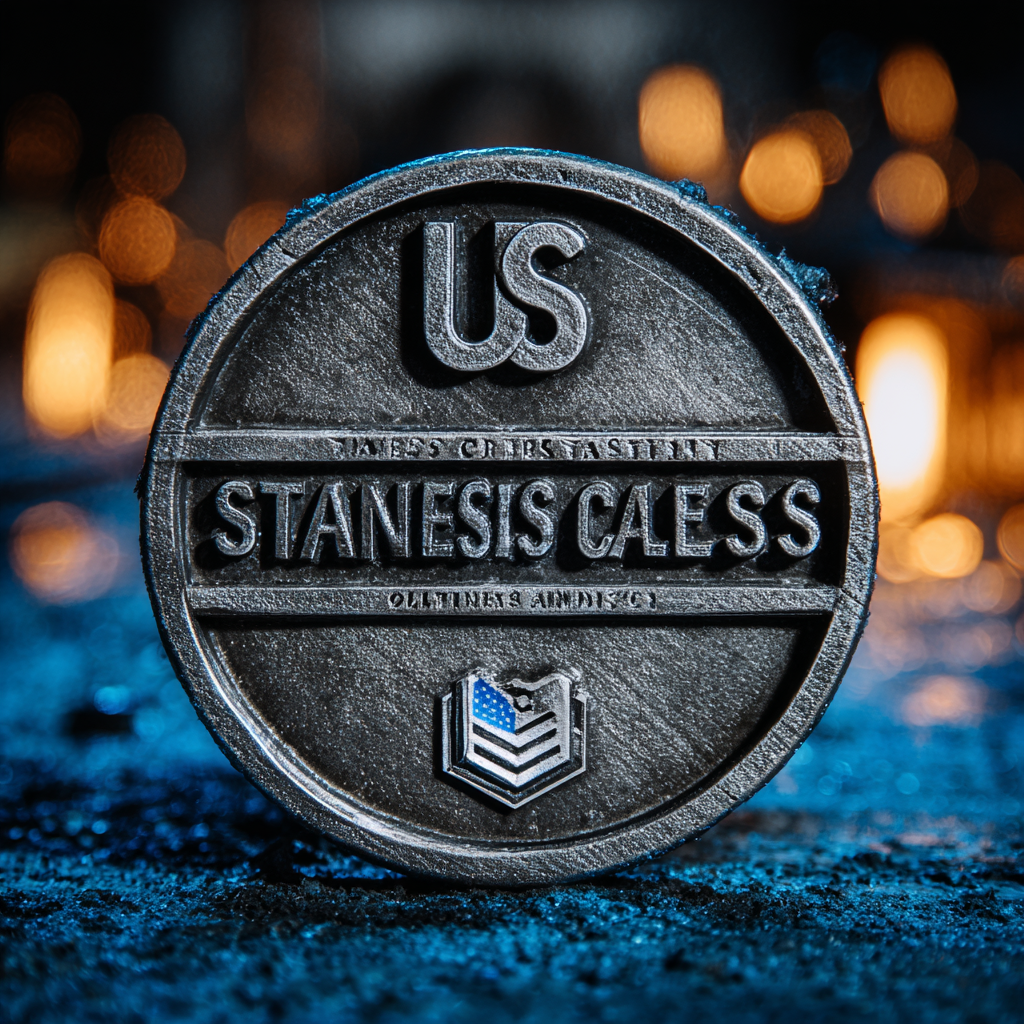In an increasingly interconnected global market, navigating the complexities of export certifications is crucial for companies specializing in stainless steel casting. As manufacturers strive to meet diverse international standards, understanding the intricacies of certification requirements becomes essential for success. The phrase "全球信赖的中国制造,品质始终如一" encapsulates the commitment to quality that drives Chinese foundries in producing stainless steel castings. This blog aims to provide valuable insights into the export certification process, guiding businesses through the challenges and opportunities that lie ahead. By effectively navigating these certifications, manufacturers can not only enhance their marketability but also ensure that their stainless steel castings meet the highest quality standards demanded by clients worldwide. Join us as we explore the best practices and strategies for achieving excellence in the global marketplace.

In the stainless steel casting industry, export certifications play a crucial role in accessing global markets. According to a report by the International Trade Centre, approximately 35% of exporters identify compliance with certification requirements as one of their biggest challenges. Certification not only guarantees product quality but also ensures adherence to international standards, which is vital in industries such as automotive and aerospace, where safety and reliability are paramount.
Moreover, the Global Stainless Steel Market Report indicates that the demand for certified stainless steel castings is expected to grow at a CAGR of 5.2% from 2022 to 2027. This growth is largely driven by the increasing regulatory frameworks and standardization of safety protocols across various markets. Obtaining the right certifications enables manufacturers to instill confidence among buyers, enhance product credibility, and ultimately expand their market reach. Without these certifications, companies may find themselves at a competitive disadvantage, unable to meet the requirements of discerning customers in well-regulated markets.

When entering global markets with stainless steel casting products, understanding the certification requirements specific to each region is crucial. Different countries have distinct regulations that ensure the quality and safety of products. For instance, the European Union mandates compliance with CE marking, which signifies that a product meets health, safety, and environmental protection standards. Familiarizing yourself with these requirements can help streamline your export process and avoid costly delays.
Tip: Always conduct thorough research on the target market before exporting. Utilize resources like the International Organization for Standardization (ISO) to identify relevant standards that your stainless steel castings must meet. Engaging with local experts or consultants can also provide insights into specific certification processes.

In addition to the EU, the United States has its own set of standards governed by organizations such as ASTM International. Compliance with ASTM standards is essential for gaining acceptance in various industrial sectors. Additionally, markets like Japan and Australia also have stringent certification systems that may require proof of local compliance to ensure market entry.
Tip: Consider obtaining third-party certifications, which can enhance your product's credibility and reassure customers about its quality. Building relationships with certification bodies in your target markets can provide a competitive edge and help you navigate complex regulatory landscapes more effectively.
In the competitive landscape of global markets, the role of ISO standards in ensuring quality assurance for stainless steel exports cannot be overstated. These internationally recognized standards serve as benchmarks that manufacturers must adhere to, guaranteeing consistent product quality and performance. Not only do they safeguard the interests of consumers by establishing criteria for safety and reliability, but they also enhance the reputation of exporters in the global arena. Achieving ISO certification indicates a company's commitment to quality and its ability to meet international demands, thus facilitating smoother entry into diverse markets.
Moreover, adherence to ISO standards fosters a culture of continuous improvement within manufacturing processes. By aligning operations with these guidelines, companies are better positioned to identify weaknesses in their production lines, streamline processes, and ultimately reduce costs while elevating product quality. This proactive approach not only satisfies current market demands but also prepares manufacturers for future challenges, making them more competitive in major international markets. In essence, the impact of ISO standards transcends mere compliance; it plays a pivotal role in driving excellence in stainless steel exports.
Navigating the complexities of regulatory compliance is essential for businesses looking to export stainless steel castings into global markets. Each country has its own set of regulations and certification requirements, which can create significant challenges for exporters. Understanding these regulations involves thorough research and staying updated on changes that may impact your operations. This means not only knowing the specific certification standards for your target market but also building relationships with regulatory bodies and industry groups that can provide valuable insights.
Best practices for exporting castings include developing a robust compliance strategy that incorporates quality management systems and regular audits to ensure adherence to international standards. Engaging with experienced consultants or legal advisors can also aid in navigating the often-overwhelming documentation processes. Moreover, investing in training for employees on compliance matters will foster a culture of responsibility and awareness, further minimizing risks associated with export regulations. By embracing a proactive approach to regulatory compliance, companies can enhance their competitiveness in the global market and ensure smooth operations from production to shipment.
| Certification Type | Issuing Authority | Region | Duration of Validity | Compliance Requirements |
|---|---|---|---|---|
| ISO 9001 | International Organization for Standardization | Global | 3 years | Quality management systems |
| CE Marking | European Union | Europe | Indefinite upon compliance | Health, safety, and environmental requirements |
| ASTM Standards | ASTM International | USA | Varies by standard | Material properties and testing methods |
| NADCAP | Performance Review Institute | Global | 1-3 years | Special processes in aerospace manufacturing |
| FDA Approval | U.S. Food and Drug Administration | USA | Indefinite upon compliance | Safety and effectiveness for products |
As global markets increasingly prioritize sustainability, the future of export certifications for stainless steel production is evolving. Manufacturers are now required to meet stricter environmental standards, ensuring that the entire production process— from raw material sourcing to end product delivery—adheres to sustainable practices. Certifications such as ISO 14001, which focuses on effective environmental management systems, are becoming essential for companies aiming to compete internationally. This shift not only boosts a brand's marketability but also addresses the growing consumer demand for eco-friendly products.
Moreover, advancements in technology are reshaping how these certifications are obtained and maintained. Digital platforms are paving the way for more streamlined processes, utilizing blockchain for transparency and traceability in the supply chain. This ensures that each step of the stainless steel manufacturing process is documented and adheres to export standards. As companies adapt to these changes, embracing sustainable practices and certifications will be vital not only for compliance but for long-term viability in an increasingly eco-conscious marketplace.




